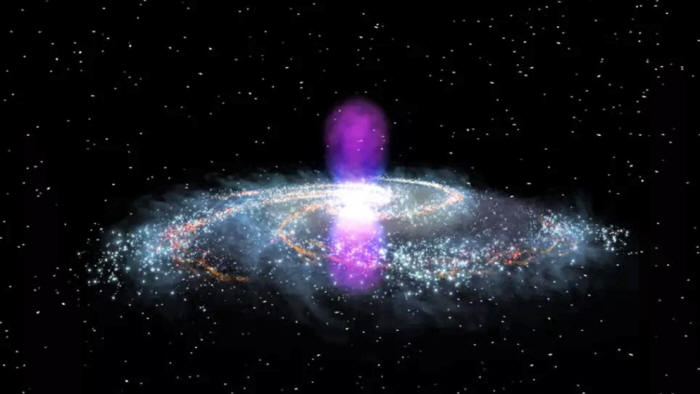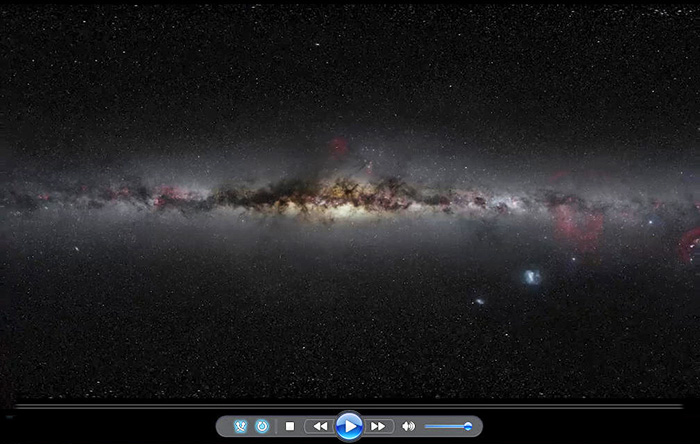|
March 09, 2022
from
Space Website the massive gamma-ray Fermi bubbles towering over the Milky Way. (Image credit: NASA Goddard)
Recently, the X-ray telescope eROSITA onboard the Spektr-RG space observatory discovered a pair of gigantic X-ray-emitting bubbles, each about 36,000 light-years tall and 45,600 light-years wide, that exploded above and below the heart of the galaxy.
These blobs are remarkably similar to huge gamma-ray-emitting bubbles that NASA's Fermi Gamma-ray Space Telescope first detected in 2010, as well as counterparts detected using both microwave and radio telescopes.
These findings may shed light on how this enormous Black Hole has grown over time and shaped the history of the Milky Way, and how other supermassive Black Holes may have influenced their galaxies as well, the researchers told Space.com.
Monster Black Hole jets
According to previous research, the similarities in the sizes and shapes of these cosmic bubbles suggests that they all arose from one cataclysmic event from the Milky Way's galactic core.
However, it has remained uncertain which of several possible triggers for this outburst could explain all these effects.
Now, with new data from eROSITA, researchers suggest a possible single cause for all these bubbles:
Normally Black Holes are as dark as their name suggests, as their gravitational fields are so powerful that not even light can escape.
However, previous research has found that when Black Holes gorge on materials from their surroundings, their magnetic fields and powerful spins can create pairs of high-energy jets of matter spewing out in opposite directions at relativistic speeds - that is, a significant fraction of the speed of light - Yang explained.
Computer models the scientists developed helped them to deduce key details about these jets. They estimated that all in all, they spewed out a whopping 3.16*1044 ergs per second.
(For reference, an 'erg' is a unit of energy. 1044 'ergs' per second is about 25 billion times the brightness of the sun, or about 10 times the brightness of the Milky Way.)
The team's computer simulations suggested that these jets lasted for about 100,000 years, blazing out at about 2.5% of the speed of light, or about 16.7 million miles per hour (27 million kilometers per hour).
The researchers estimate that the Milky Way's supermassive central Black Hole "had a very good appetite," gobbling up about 1,000 to 10,000 times the mass of the sun during this time, Yang said.
Although Sgr A* is largely inactive at the moment,
Future research can ask,
These new details about the bubbles in the Milky Way can help researchers,
The scientists detailed their findings (Fermi and eROSITA Bubbles as Relics of the Past Activity of the Galaxy's Central Black Hole) on March 7 in the journal Nature Astronomy.
|



